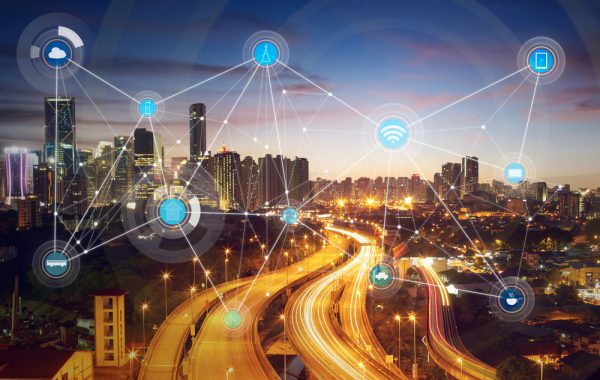How AI is changing the telecoms industry [Q&A]

The transition to cloud and SaaS use, along with the recent move towards remote and hybrid working, has placed increased pressure on the telecoms industry. At the same time, it has unlocked a significant opportunity for telcos, as remote work has placed a premium on services like fiber and broadband.
Increased data volumes place additional demands on infrastructure and drives up costs. We talked to Anthony Behan, managing director for communications, media and entertainment at Cloudera to discuss these developments and how artificial intelligence is helping telcos to adapt.
BN: Have telcos been caught off-guard by recent changes to the way we work?
AB: It's not so much a case of being caught off-guard, it’s more that the focus has changed. The pandemic presented unique challenges for the telco industry. Almost overnight it had customers working from home, and children streaming TV shows or playing games online to stay entertained, all at the same time, which placed a huge strain on networks. This forced a shift in the telecommunications industry and sharpened the focus on network resiliency. At the same time, many telcos have moved away from efforts to diversify into other spheres, such as media and entertainment, as they look to fulfill their original promise of providing robust connectivity to customers.
BN: What are the main sources of bottlenecks in the telecoms sector?
AB: Telco networks are highly complex, comprising many interconnected systems -- from copper wiring to 5G, and 6G on the horizon. These all have roles to play when networks are in high demand or experiencing downtime, but the complexity of these disparate systems makes it incredibly difficult to predict and prevent network failures effectively.
There are also internal bottlenecks. Telcos produce huge volumes of data when monitoring network performance -- often up to three petabytes per day. To put that into context, just a single petabyte of data is equivalent to more than 500 billion pages of text. Data on this scale creates processing and storage challenges in the immediate term. And in the long term, analyzing and driving value from this data volume becomes incredibly difficult.
BN: Why is AI key to modernizing the industry?
AB: With a renewed focus on their core offering, many telcos have invested heavily in AI to improve network resilience. In the blink of an eye, it can do things that humans simply can't, such as identifying adverse weather patterns which correlated with specific consumption might impact network performance, and predicting the likelihood of a resulting outage. Telcos can then make predictive decisions where on call engineers will need to be dispatched to.
AI reveals hidden patterns that humans may not be able to see. Obviously, weather can pose a risk to physical networks from high winds or lightning, but it also impacts on human behaviour. For instance, employees may change their commute patterns based on the weather. If it’s raining people might be more likely to stay in and stream TV, while good weather could lead to increased city commuting. These human patterns drive distinct communication behaviors, which, in turn, place varying strains on the network.
AI can also predict surges in traffic and autonomously manage workloads to reduce strain on networks. We witnessed this during the pandemic. With AI powering decisions and identifying network bottlenecks, telcos were able to come up with solutions when fiber networks were being stretched and delivering slow speeds. They could advise customers on how to get the best service -- like streaming TV on wireless networks instead of fiber during periods of high demand. While this might sound counter-intuitive, it made a huge difference in keeping the network stable and customers happy.
BN: How can ever rising volumes of data be addressed?
AB: Many telcos have modernized and looked to the cloud to help them tackle rising data volumes and instant scalability. This became even more important during the pandemic due to supply chain disruption, which meant the lead time for new servers was six, nine months or more. However, the cloud does pose compliance and governance challenges. That's not to say the cloud can't resolve the challenges presented by handling data at this scale. But certain types of information, such as customers' personally identifiable information (PII) or card information, will often require on-premises or in-country storage -- to ensure organizations can maintain security and control over sensitive data, and regulatory compliance.
Making decisions about where data sets belong relies on implementing modern data architectures supported by a holistic data platform. This can enable better informed choices that can optimise data collection and storage. Some data sets can go on the public cloud, some need to stay on-premises, and in time those constraints may change -- so the capacity to adapt to change is important.
For instance, telcos routinely collect huge volumes of network health data from hundreds of reporting fields, with updates arriving every few seconds. While it's essential to store and analyse this data to drive value, a significant portion of it is unnecessary. If they truly understand their data, telcos can optimize their reporting frequency to once every a few minutes -- saving them from collecting needless data and reducing cloud-related costs.
BN: What can we expect in future from a more proactive telco sector?
AB: With new AI use cases emerging all the time, the telco sector will increasingly look to leverage the technology to improve products and services. But the effectiveness of AI hinges on the quality of the data it learns from. Models trained on only a fraction of an organization's data might overlook critical insights or generate 'hallucinated' responses.
This means we're likely to see more telcos utilizing modern data architectures to underpin AI innovation. This will help them to optimize networks, deliver more robust connectivity and improve customer satisfaction. For consumers, that means easier interactions, fully digital engagement, and the kind of experience that we have come to expect from internet services.
Image credit: jamesteohart/Shutterstock
